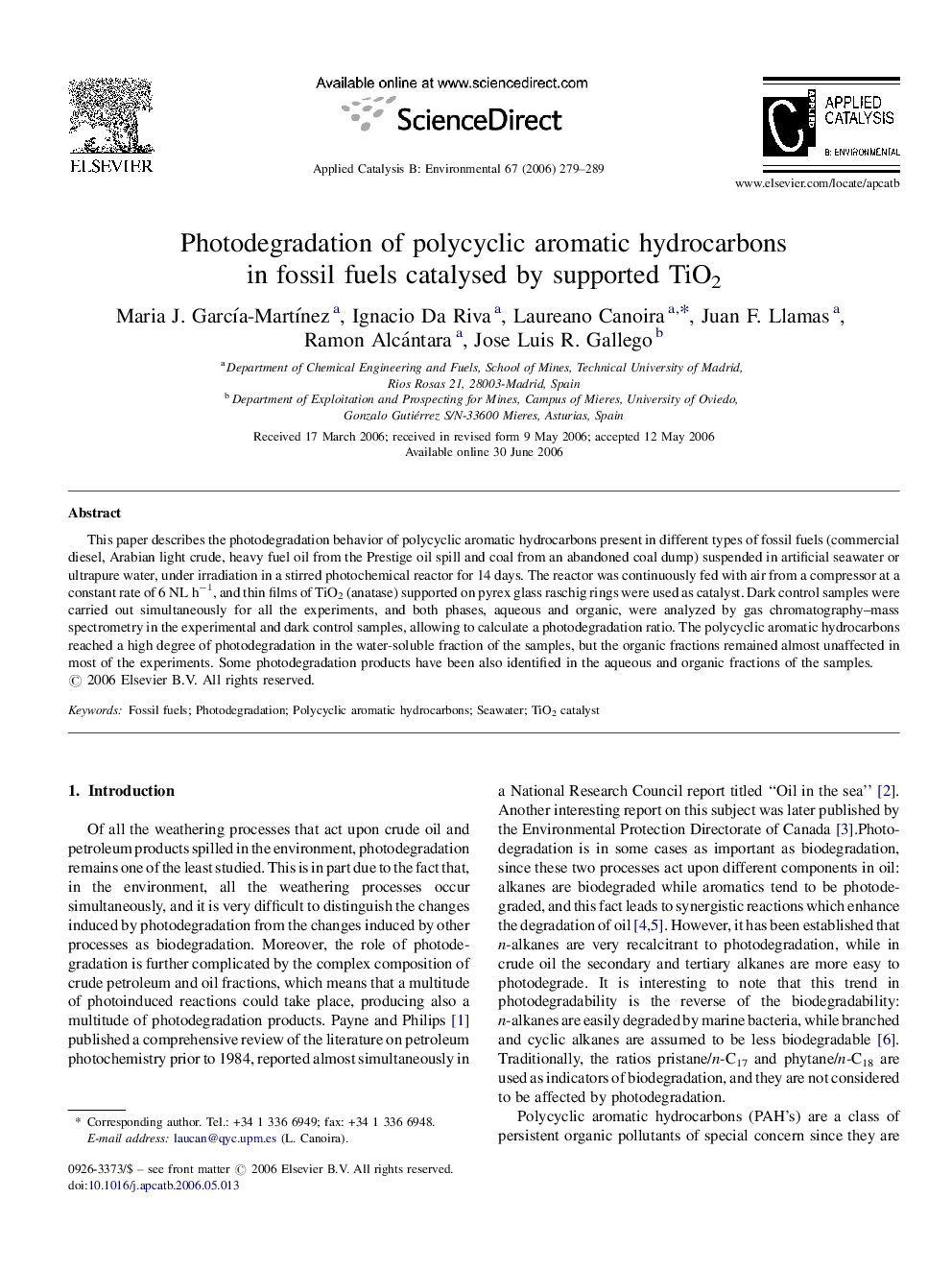| Article ID | Journal | Published Year | Pages | File Type |
|---|---|---|---|---|
| 48870 | Applied Catalysis B: Environmental | 2006 | 11 Pages |
This paper describes the photodegradation behavior of polycyclic aromatic hydrocarbons present in different types of fossil fuels (commercial diesel, Arabian light crude, heavy fuel oil from the Prestige oil spill and coal from an abandoned coal dump) suspended in artificial seawater or ultrapure water, under irradiation in a stirred photochemical reactor for 14 days. The reactor was continuously fed with air from a compressor at a constant rate of 6 NL h−1, and thin films of TiO2 (anatase) supported on pyrex glass raschig rings were used as catalyst. Dark control samples were carried out simultaneously for all the experiments, and both phases, aqueous and organic, were analyzed by gas chromatography–mass spectrometry in the experimental and dark control samples, allowing to calculate a photodegradation ratio. The polycyclic aromatic hydrocarbons reached a high degree of photodegradation in the water-soluble fraction of the samples, but the organic fractions remained almost unaffected in most of the experiments. Some photodegradation products have been also identified in the aqueous and organic fractions of the samples.
